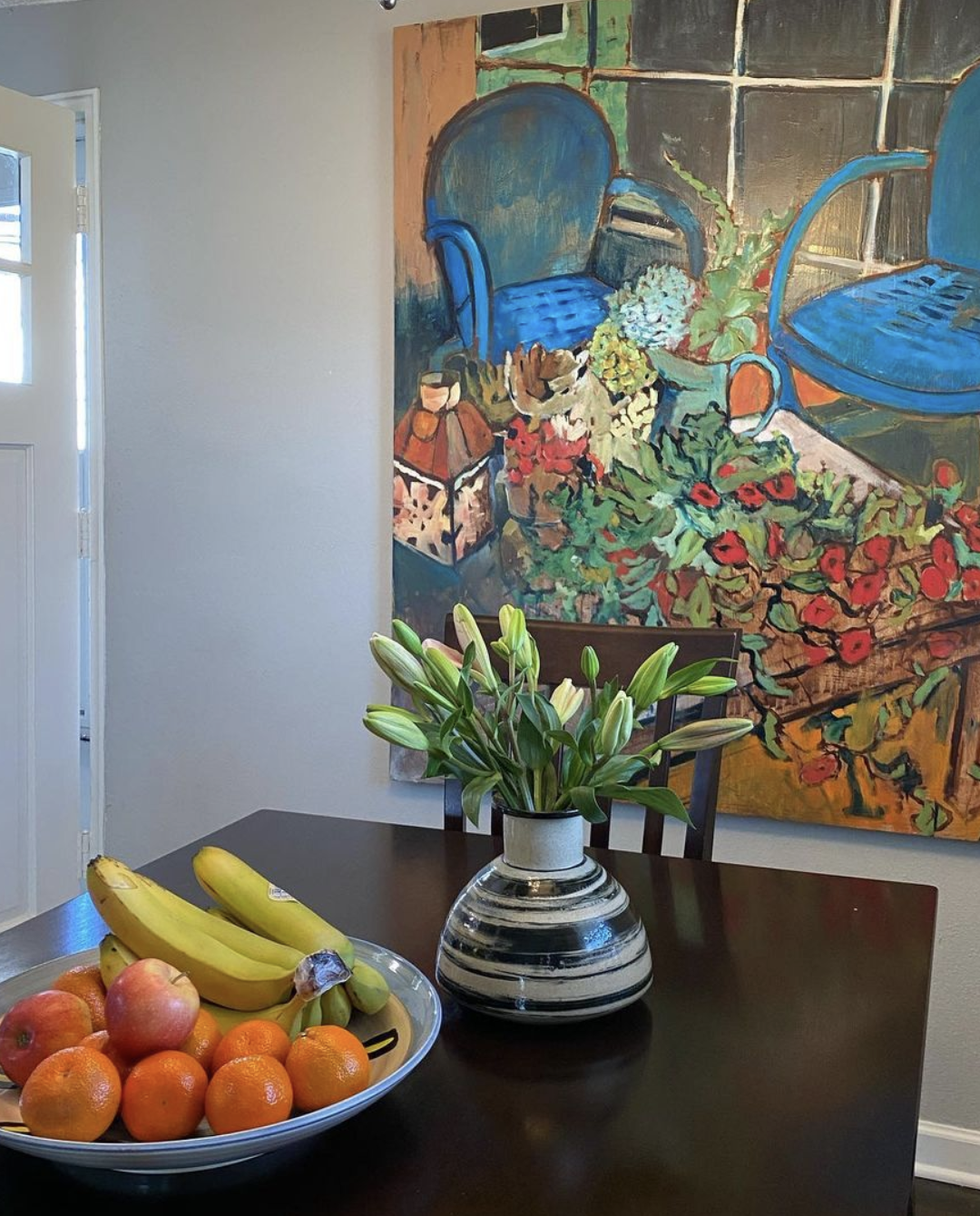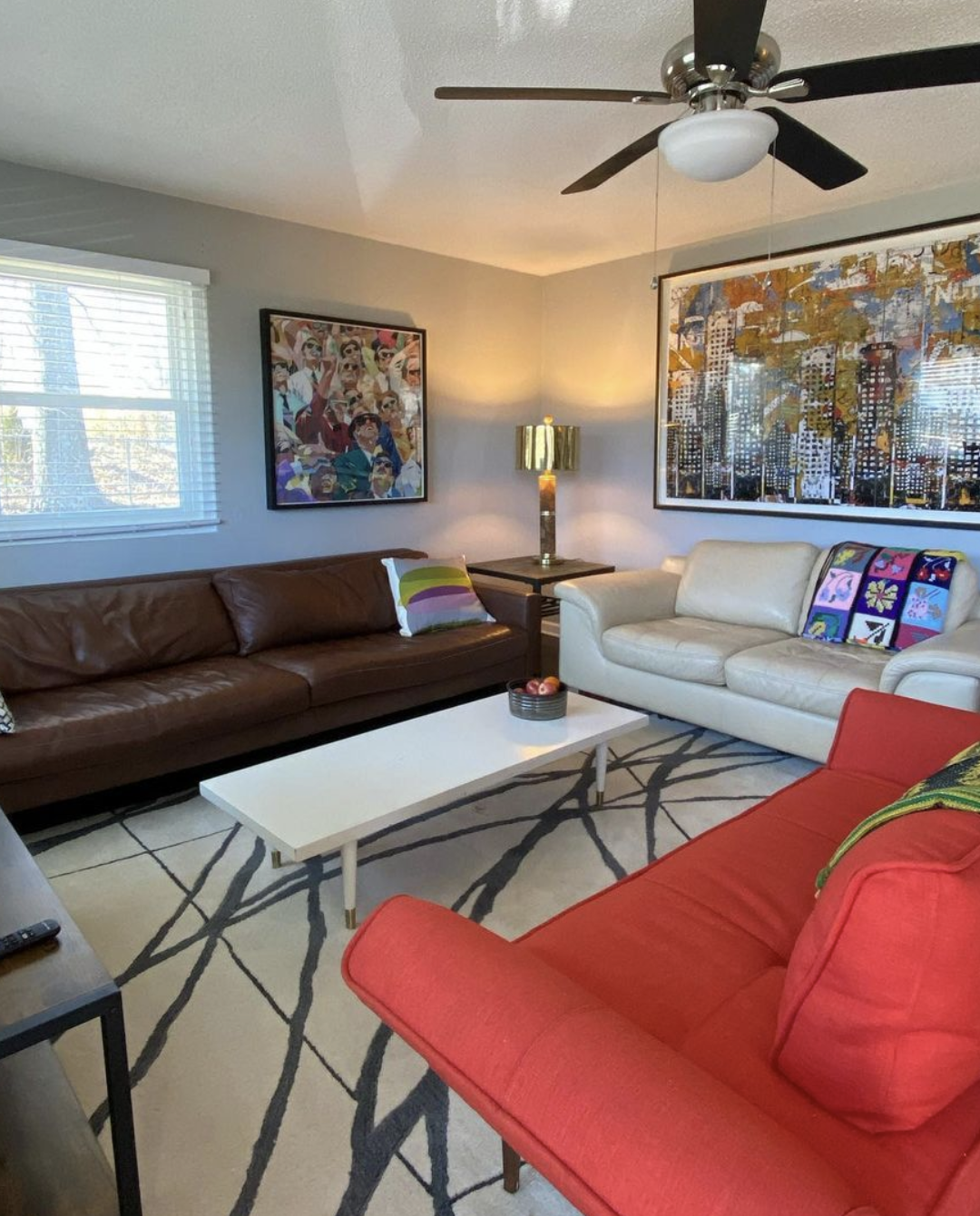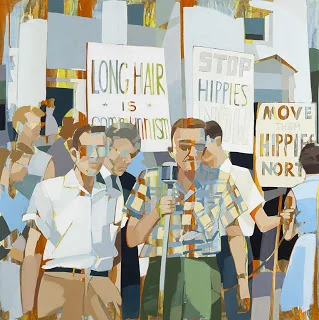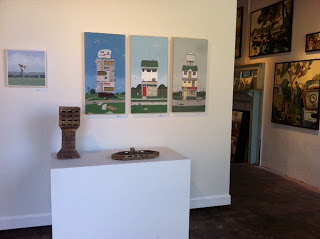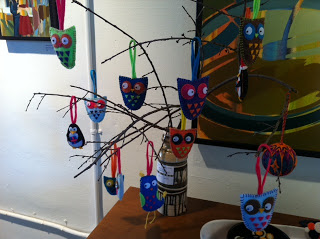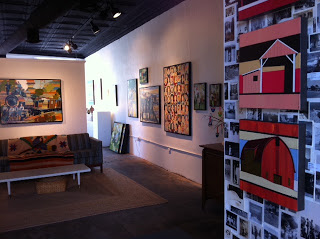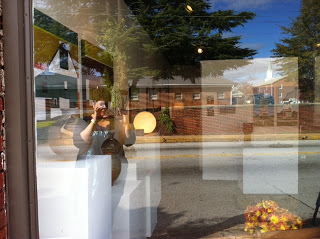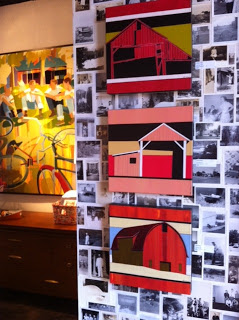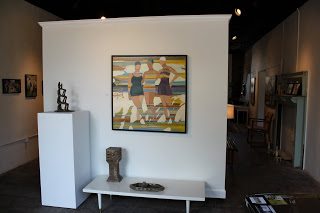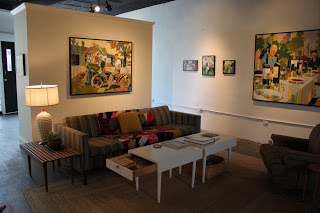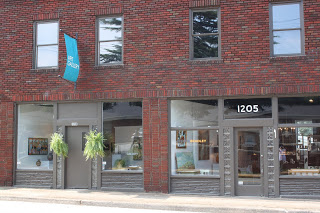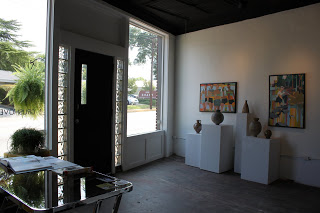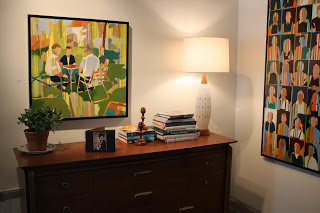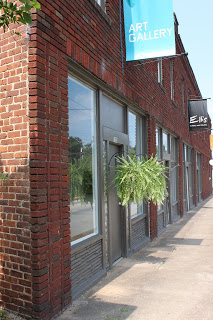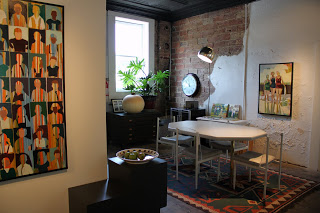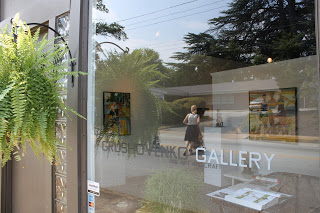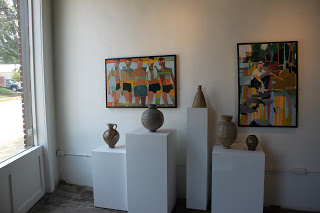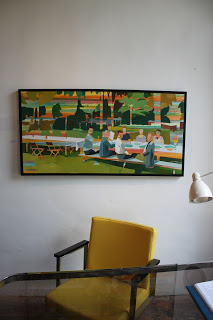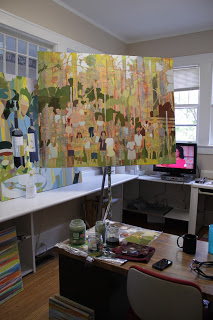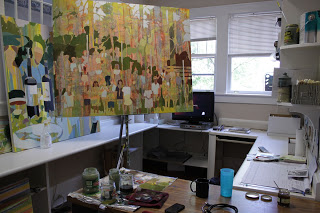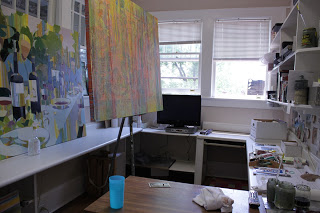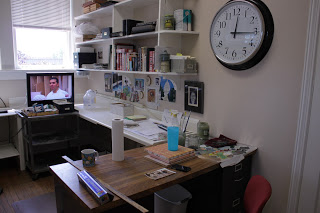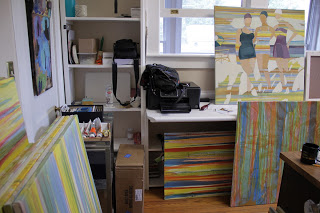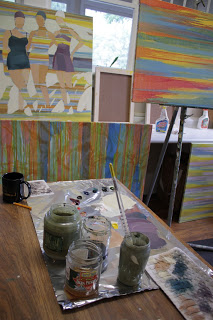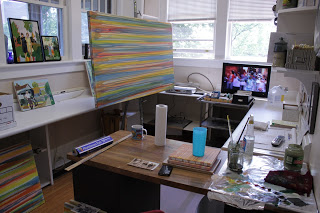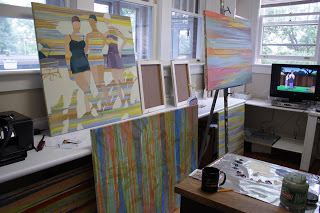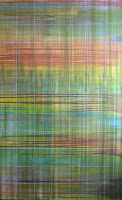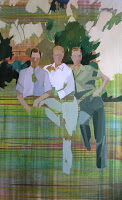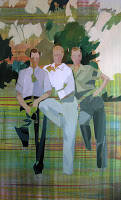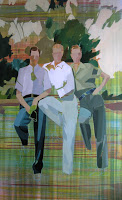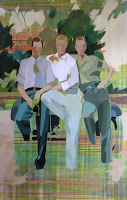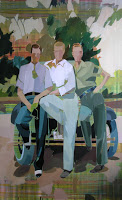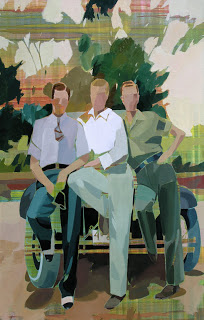I debate often, with others and with myself, the benefits and detriments of artist self representation vs. gallery or dealer representation. While Genna and I do both, the plusses of self representation far outweigh the detriments in our personal equation. No one is more motivated to represent us than us. Not having a middle man between us and our collectors helps us keep our prices at a reasonable level. Travel. The glamour of sweaty, windy, panicky booth assembly. Oh, sorry, that goes on the other side of the equation. But the biggest benefit by far is the constant feedback we receive from viewers as we sit for hours, looking at our paintings, hearing what they have to say, and discussing the work. I believe I have learned as much about our work from others as I have from actually participating in making it.
I had a particularly interesting conversation with a young man recently in The Woodlands, TX. He was of an age that I now consider ‘a kid’…probably somewhere in his early twenties…and was intensely chatty. He was poking me mercilessly to reveal more and more about what our work means, what our motivations are, what are the themes, why is this this color, why is that painted like that. He was very sweet and I was doing my best to answer his questions but was struggling as most of what he was asking had no verbal answer. Finally I said something to the effect of “painting is a visual media. If I could communicate everything I wanted to communicate in words, I’d be a writer.” I promise I didn’t mean this in a smart ass way. It’s just true. And more than not having a clear answer in my own mind to many of his questions, I felt that to manufacture answers would minimize the work, make it about one thing when thing when truly it’s about everything and/or anything I think this is why you’ll often find artists much more interested in discussing their medium and physical processes than their themes. I can talk all day about how Genna and I make our work but tend to gloss over the ‘why’ with broad strokes…family, community, nostalgia, the quality of memory, the beauty of the everyday.
I wound up having a really great conversation with that kid about art in general and the contrast between visual and verbal art that had me charged up for the rest of the day. Like I said, perks of the business. Then last week I was reading Malcolm Gladwell’s ‘Blink’ which is about the power of and mechanism behind snap decisions. Around page 119 there’s this:
Let me give you a very simple example. Picture, in your mind, the face of the waiter who served you the last time you ate at a restaurant, or the person who sat next to you on the bus today. Any stranger whom you’ve seen recently will do. Now, if I were to ask you to pick that person out of a police lineup, could you do it? I suspect you could. Recognizing someone’s face is a classic example of unconscious cognition. We don’t have to think about it. Faces just pop into our minds. But suppose I were to ask you to take a pen and paper and write down in as much detail as you can what your person looks like. Describe her face. What color was her hair? What was she wearing? Was she wearing any jewelry? Believe it or not, you will NOW DO A LOT WORSE AT PICKING THAT FACE OUT OF A LINEUP. THIS IS BECAUSE THE ACT OF DESCRIBING A FACE HAS THE EFFECT OF IMAIRING YOUR OTHERWISE EFFORTLESS ABILITY TO SUBSEQUESNTLY RECOGNIZE THAT FACE.
The psychologist Jonathan W. Schooler, who pioneered research on this effect, calls it VERBAL OVERSHADOWING. Your brain has a part (the left hemisphere) that thinks in words, and a part (the right hemisphere) that thinks in pictures, and what happened when you described the face in words was that your actual visual memory WAS DISPLACED. Your thinking was bumped from the right to the left hemisphere. When you were faced with the lineup the second time around, what you were drawing on was your memory of what you said the waitress looked like, not your memory of what you saw she looked like.”
(I apologize for the shouting…the caps were mine, not Mr. Gladwell’s). SO…aha. We all have a visual, instinctive, magical place in our minds that is not only not enhanced by a verbal overlay of an experience but actually subverted by it.
Does this mean we shouldn’t talk about art? Absolutely not. We should all be pleased to share our experiences of art. This interaction enriches the art exponentially. What we should not do, however, is ask artists to give to us in words what they have already given us whole heartedly, freely in paint, clay, song, pixels, metal, wool, troll doll assemblage, photography, peep collage…


